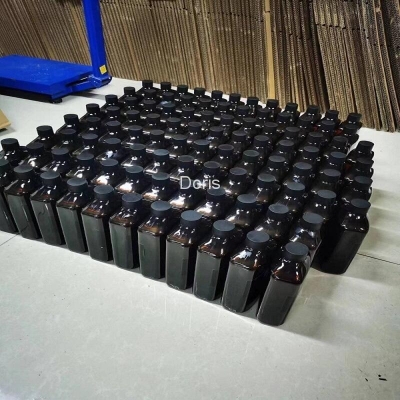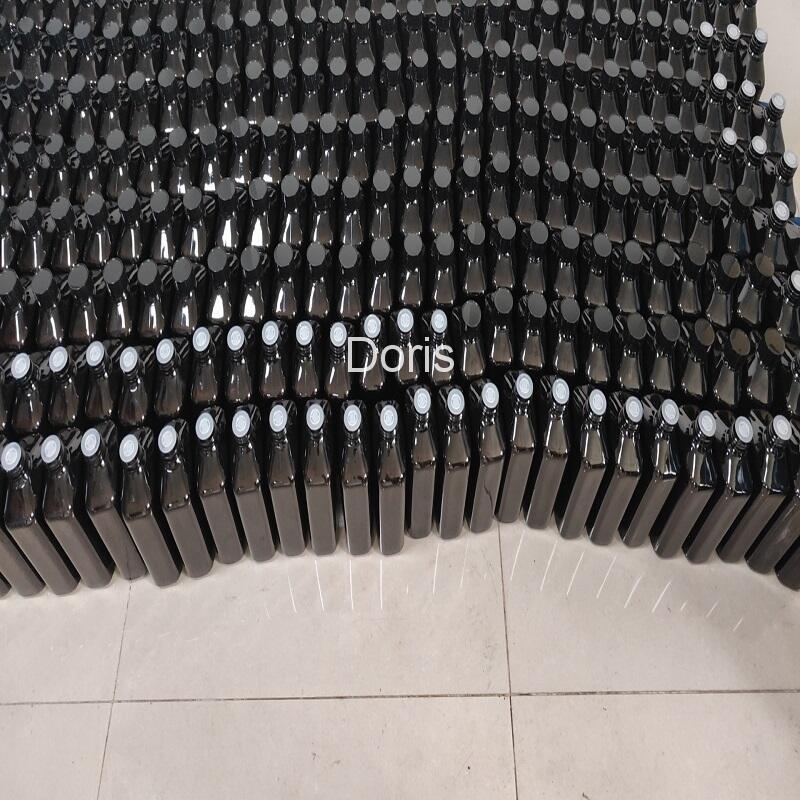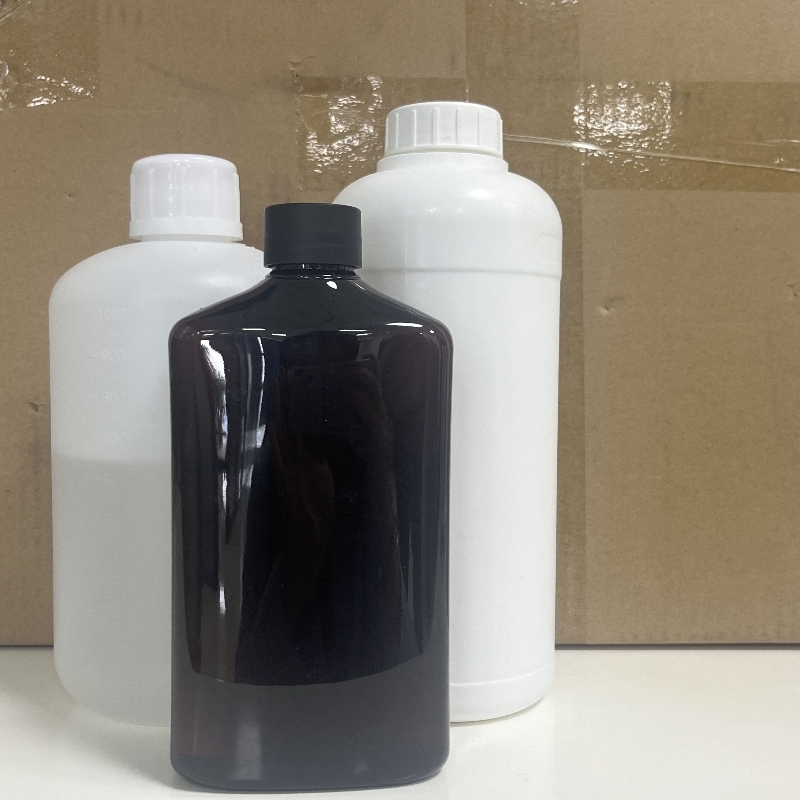-
Categories
-
Pharmaceutical Intermediates
-
Active Pharmaceutical Ingredients
-
Food Additives
- Industrial Coatings
- Agrochemicals
- Dyes and Pigments
- Surfactant
- Flavors and Fragrances
- Chemical Reagents
- Catalyst and Auxiliary
- Natural Products
- Inorganic Chemistry
-
Organic Chemistry
-
Biochemical Engineering
- Analytical Chemistry
- Cosmetic Ingredient
-
Pharmaceutical Intermediates
Promotion
ECHEMI Mall
Wholesale
Weekly Price
Exhibition
News
-
Trade Service
2018 has been a quiet year for both China and the United States.
data show that in 2016 China's oral medical equipment market size of about 134.6 billion yuan, is expected to 2020 China's oral medical equipment and related products and services market size will reach 400 billion yuan. However, due to the late development of dentistry in China, 90% of China's oral medical devices are currently dependent on imports, especially high-end oral medical equipment and consumables. China's oral medical device enterprises are mainly agent dealers, independent research and development enterprises less.medical device agent dealers operating difficulties, according
statistics, China's medical device channel companies have nearly 190,000. In the past, due to the lack of GSP specifications and unified bidding for medical devices in China, the market access threshold for medical devices is low, and there are a large number of undocumented units and individuals operating in the agency distribution industry, resulting in a fragmented and intense competition pattern of medical devices in China, which has a profound impact on small and medium-sized enterprises.
example, from the perspective of its business model, its profit model is mainly direct marketing and channel distribution of medical institutions. Its VIP customers are mainly public hospitals in Beijing, private chain oral clinics, oral specialist hospitals, etc. , but the main customers are still mainly public hospitals, including Peking University School of Stomo school and its outpatient department, Peking University People's Hospital, Capital Medical University affiliated with Beijing Tiantan Hospital and other well-known public hospitals. Until 2016, dental companies were profitable primarily by selling directly to healthcare providers, and on that basis, the company continued to make money by expanding distribution channels. By the end of 2016, DentalCom had established partnerships with more than 30 distributors in 31 Sheng Autonomous Regions and municipalities directly under the Central Government of China, achieving regional coverage of about 75% of the sales areas in Chinese mainland regions.
, although the dental customer area coverage is wide, but the business situation is slightly worrying. According to public records, dental profits remained at around $3.5 million in 2014 and 2015, but declined significantly after 2016.
so volatile in 2016 because of the company's otherwise stable earnings?
The main reason is because as an oral medical device agent distributor, the operating income structure is single, the company's revenue mainly comes from the sales agent products, easy to be affected by product agent authorization, agent product prices, market competition and other uncertainties.
From the product structure, dental general is mainly engaged in oral minimally invascopic treatment equipment (such as oral laser treatment machine, oral diode laser treatment instrument and diode laser treatment instrument) and intelligent digital oral diagnosis and treatment equipment (such as high-definition digital observatory, digital oral CT, dental tablets, etc.) agent sales.
Although intelligent digital oral diagnosis and treatment equipment is the cultivation of teeth and orthodontic dental medical projects, but the number of demand is small, generally a medical institution only 1-2 digital oral CT, so product sales are not stable, seriously affecting the company's revenue situation. In addition, product licensing and medical device registration period also seriously affect the company's revenue. In 2016, the company's main agent products, Israel Syneron oral laser treatment machine registration certificate failed to obtain timely approval from the State Food and Drug Administration, resulting in more than half a year of products can not be sold, seriously affecting the company's sales revenue and profits.
, for small and medium-sized enterprises, the company's operation and management is not standardized, high mobility of personnel, easy to lead to poor management. Dental pass as an agent dealer, by the loss of sales staff, the company's performance also showed a significant decline. According to DentalCom's 2018 semi-annual report, it achieved operating income of about 3.01 million yuan in the first half of the year and signed a sales contract of about 5.45 million yuan in the second half of the year, but the total estimated annual revenue amount has not yet reached last year's operating income amount.oral medical device enterprises can not be separated from the agent model
the plight of dental pass is not only the company's dilemma, but represents the current situation of many domestic oral medical device agent distribution enterprises. Due to china's oral medical device research and development technology has not reached the level of foreign countries, oral medical institutions use equipment and consumables highly dependent on imported products, resulting in China's oral medical device enterprises to agent-based distribution model, the entire industry encountered its business model can not adapt to the current development situation and bring pain. Oral medical device agent distribution enterprises as a circulation channel of medical devices, is the link between medical device manufacturers and medical device institutions, enterprises through their own control channels to build the corresponding sales channels. At present, the domestic oral imported medical device circulation link is as follows:
domestic medical device circulation channel marketing methods are more chaotic, but still to the following three traditional business models:
1, manufacturer-owned (direct) mode: equipment manufacturers set up their own sales team to the terminal medical institutions to carry out sales promotion activities. At the same time, the delivery to the distributor and receive weak money, products from the distributor to the terminal medical institutions. In this mode, the general manufacturers are normal in the billing, manufacturers of channels and terminal medical institutions have strong control, but the cost of sales will be greatly increased, so such a model is less common.
2, the floor price agent model: equipment manufacturers will be part or all of the sales process to the agent dealer, and distribution can be available by the manufacturer to find a distributor to ship, or by the agent dealer to find a distributor to ship. In this mode, the manufacturer low in insaling to the first-level agent dealers, and then by the first-level agents to the multi-level agents, there are hanging and passing behavior. "Since the sales process is done by agent dealers, the manufacturer has less control over channels and end customers, but the manufacturer's cost of selling is significantly reduced." This model is the main business model of oral medical device enterprises in China.
3, high open high return model: with the bottom price agent model, medical device manufacturers will channel and promotion and other sales functions transferred to agent dealers, to achieve sales team outsourcing. In this mode, the manufacturer supplies the agent with low prices and in insinding to the agent dealer, but the additional taxes and fees incurred by the agent reseller are returned to the manufacturer. Since the sales process is done by the agent dealer, the manufacturer also has low control over the channel and terminal medical structure.
The above mentioned in the current domestic oral medical device enterprises the most important business model is the bottom price agent model, in this mode, because of the same category of medical device products differentiation is small, channel vendors through the way of price and relationship, resulting in a decline in profits, agent distribution business situation is getting worse.health care reform policy greatly compressed the profit margins of agent dealers
At present, there are many medical device agent dealers in China through the circulation channels by hanging and passing behavior to obtain profits. However, in order to solve the tax problems of the pharmaceutical and medical device industry, improve the transparency of the overall distribution chain of the industry, put an end to the behavior of agent dealers to raise prices, in order to ultimately reduce the overall price paid by patients to enjoy medical services, since April 2016, the state and provincial administrative governments issued a series of two-vote system as the core of the policy and guidance documents. The two-vote system began to be overhauled in the pharmaceutical industry and will be phased in in the medical device industry starting in 2018.
may 2018, Anhui Shengsanxi Province, as a pilot, officially issued a two-vote guidance document in the field of medical devices, the scope of future reform will be extended to other provinces and cities. A two-vote system for the medical device industry would be imperative.
the implementation of the "two-vote system" policy, in the medical device circulation channel link, the device agent dealer enterprises have a deep impact. For manufacturers, compared to the current multi-level agent distribution model, manufacturers only allow the use of single-level agents, including distribution services, when they put products into the hospital. Under the new model, the behavior of the invoice by hanging and passing tickets has been greatly improved, or even eliminated, and the manufacturer issues an invoice to the agent, while the agent issues an invoice to the terminal medical institution. For device manufacturers with multi-level agents, this significantly reduces the risk of customer churn and reduced regional coverage.
the equipment distribution industry will face great challenges compared to manufacturers. The future model of cooperation between manufacturers and current first- and second-tier agents will change dramatically, and some agents will need to be transformed into sales outsourcers. In the dealership, there will also be a shuffle. Because agents at different levels have different advantages and disadvantages in the circulation channel, the future development trend affected by the two-vote policy is also different. National General Generation by virtue of its strong financial strength, regional agents to buy or acquire. Regional agents, by virtue of their local divisions, can integrate resources through active business strategies and financing, and can hopefully become a national leader. Local small enterprises and mixed enterprises operating in an awkward position, may face acquisition or elimination. 's independent research and development may be another way out for agency dealers
According to Evaluate Medtech's Global Medical Device Market Forecast 2016-2022 released in September 2016, the global oral medical device market will be $12.4 billion in 2015, growing at a current compound annual growth rate of 5.7%, and the global oral medical device market will reach $18.3 billion by 2022. The global oral medical device giants are now foreign companies, Danaher (USA), Planmeca (Finland), Dentsply Sirona (USA) and Carestream Health (USA). In addition, there are major players such as 3M (USA), Midmark (USA), A-dec (USA) and Ivoclar Vivadent (Liechtenstein). Danaher is now valued at $75.7 billion, while Dentsply Sirona is worth about $8.46 billion.
2016, China's oral medical device market size of about 134.6 billion yuan. According to the China Dental Equipment Market Outlook Analysis and Investment Strategy Research Report 2016-2020 released by China Business Research Fellows, with the aging of the population and the improvement of the consumption level of residents, the market size of oral medical equipment and related products and services in China is expected to exceed 400 billion yuan in 2020. At present, China's oral medical device enterprises are mainly agent-oriented, but in recent years there have been a lot of independent research and development-based industry stars, to oral CBCT industry, for example, The United States and Asia Photoelectrcon (002690. SZ), Beijing Long view, Shenzhen Fison, Shenzhen Anke, Boendente and so on.
from agent to independent research and development transformation, in the domestic medical device industry, Meirui Medical (300760 announcement, quotes, reviews, financial reports) can be counted as a myth. In the early days, Murray became the first medical device company listed on the New York Stock Exchange in China through the model of "agent sales and independent research and development". At present, the medical device "unicorn" Murray from the New York Stock Exchange in the United States, to the A-share listing, at the issue price of 48.8 yuan per share to the GEM this year's "most expensive new shares" throne. Myri's success depends not only on its founders and technical teams graduating from Tsinghua University, Peking University and China University of Science and Technology, but also on the development path they have developed, through the import of products through agents, familiar with products and their technology, for their own research and development of products to lay the foundation.
's success may not come by accident. At present, dental pass also through the "agent sales and independent research and development" model, ready to develop. The company is responsible for organizing the company's own research and development projects by hiring Mr. Zhang Yufeng, who has been the head of the laser research and development and production project and project leader of the North China Institute of Photoelectrology Technology, as the core research and development personnel. At present, Dental Pass has obtained 15 software copyrights, with a total of 17 patents. At the same time, the company's independent research and development projects are still in the process, but due to various factors, resulting in independent research and development products failed to meet the requirements of the trial, the time of the product on the market is still debatable. From the oral medical device agent dealer transformation to "agent distribution and independent research and development", dental pass may be "slowly repaired." (Rhino Star)







